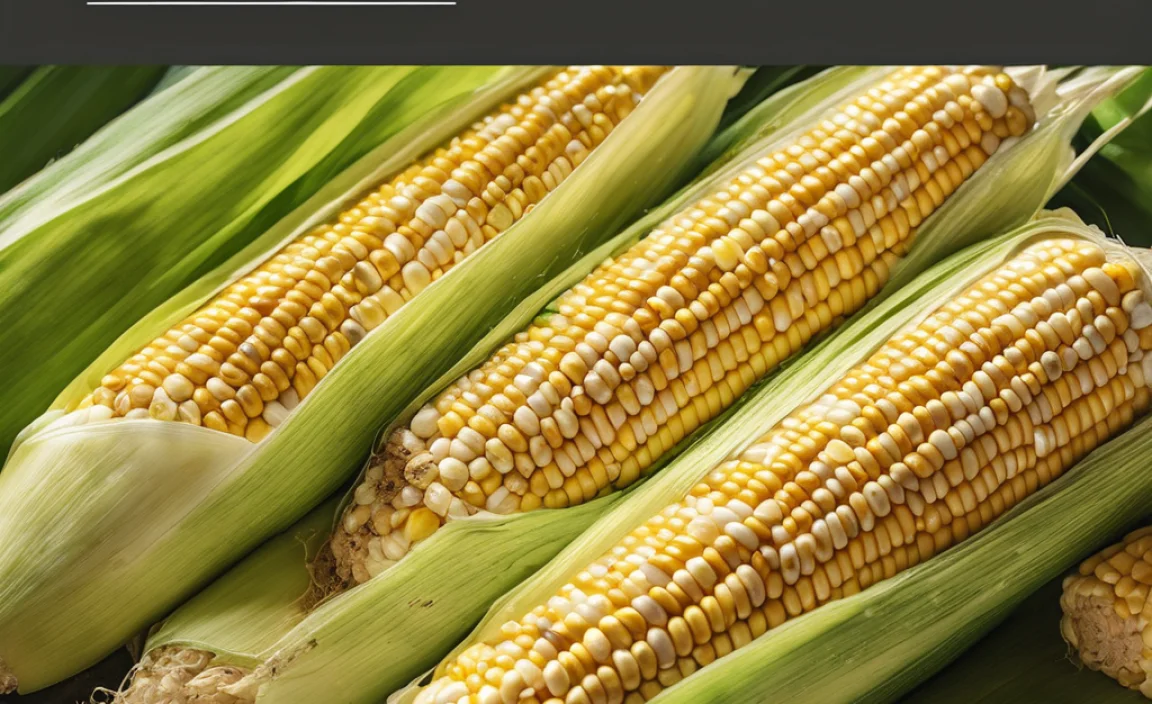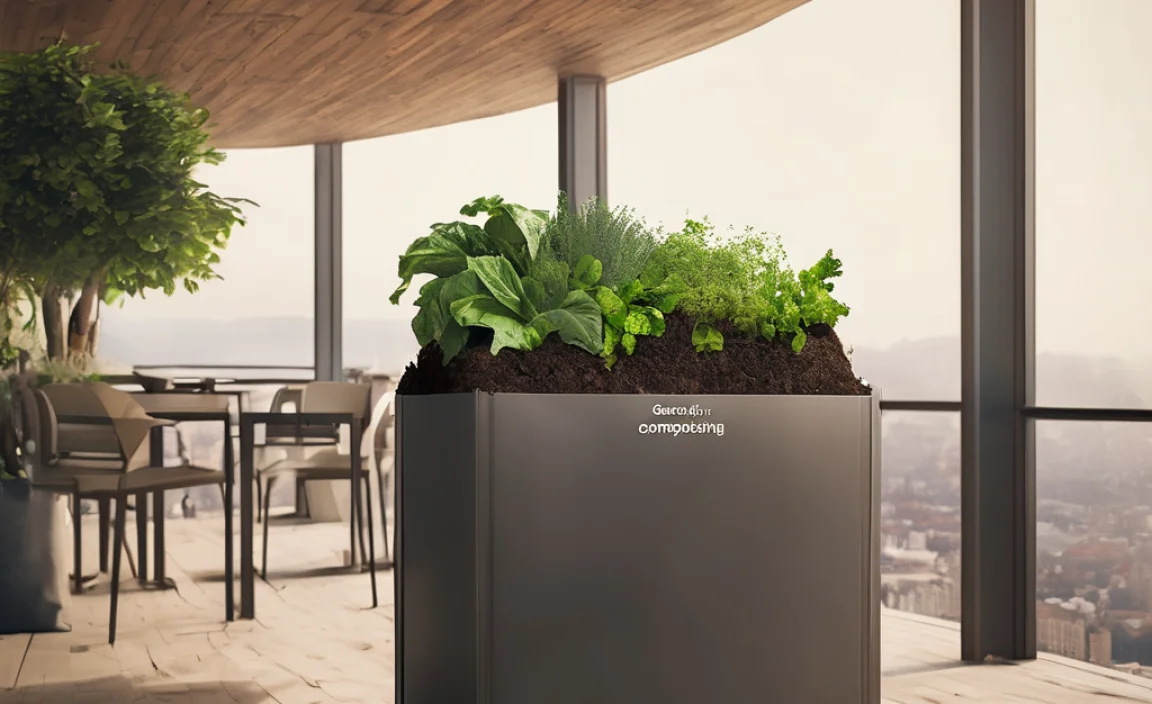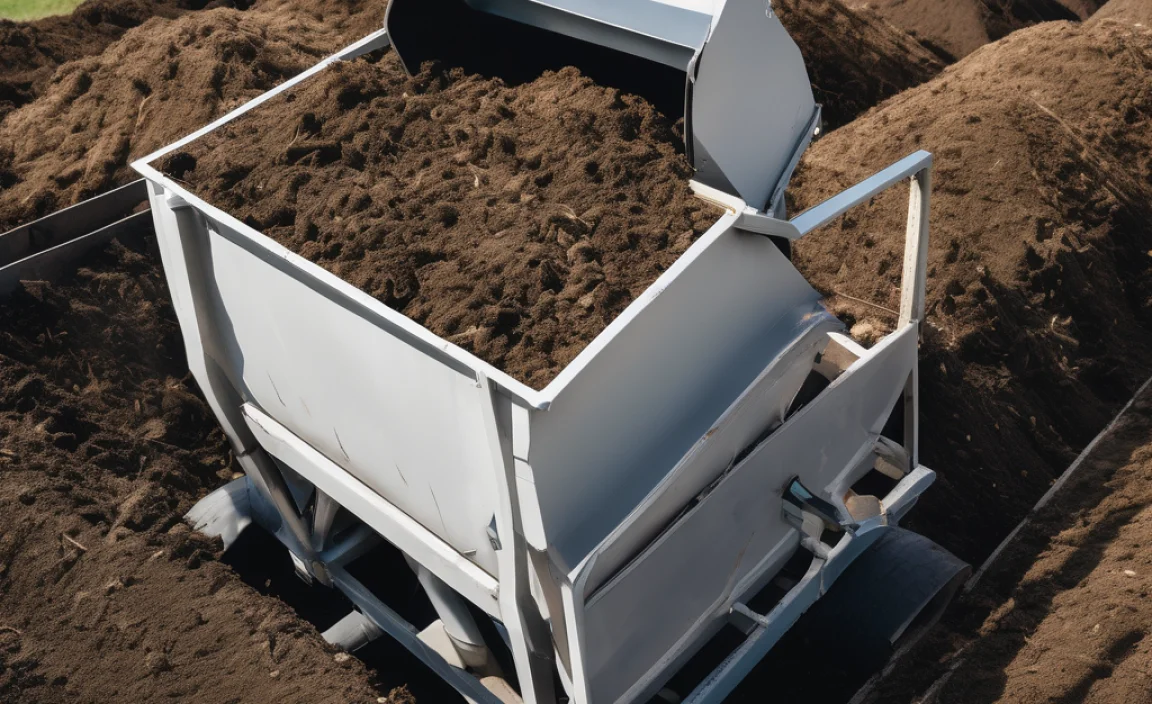That chill in the air means winter is coming! For homeowners with sprinkler systems, this is a big heads-up. You’ve got to get that water out before freezing temperatures hit. It sounds tricky, but with the right tool, it’s totally doable. We’re going to walk through how to pick the perfect air compressor and get your sprinkler system winter-ready. No stress, just simple steps to protect your yard!
Why You Need an Air Compressor for Sprinkler Blowouts
So, why an air compressor? Think of it like giving your sprinkler pipes a good, strong blast of dry air to push out every last drop of water. If water sits in those pipes all winter, it can freeze, expand, and crack them. Not fun, and definitely not cheap to fix! Using compressed air is the safest and most effective way to prevent this. It’s a homeowner’s best friend when it comes to winterizing.
Manually draining might miss tiny pockets of water. Sprinkler systems often have complex layouts with low points where water loves to hide. An air compressor provides enough force to get into those nooks and crannies. It’s like a mini hurricane for your pipes, but a friendly one that saves you money down the line.
Plus, doing it yourself saves you the cost of hiring a professional. Many homeowners think this is a job for the pros only, but with the right guidance, you can absolutely handle it. It’s empowering to tackle these home maintenance tasks and keep your property in top shape. We’ll break down exactly what you need to know to make it happen smoothly.
Common Pitfalls of Ignoring Sprinkler Winterization
Ignoring your sprinkler system during the cold months can lead to a surprise bill in the spring. Cracked pipes are the most common issue. These can range from small leaks that waste water to major breaks that flood your yard and potentially damage your home’s foundation. The cost of repairing or replacing sprinkler lines can really add up. We’re talking hundreds, sometimes even thousands, of dollars depending on the extent of the damage.
Another problem is damage to the sprinkler heads themselves. Freezing water can break the delicate internal components, leading to misaligned spray patterns or complete failure. Then there’s the risk to the main water line and backflow preventer, which are often the most expensive parts of the system. These are critical components that protect your home’s water supply from contamination, so you don’t want them compromised.
The good news is that a thorough blowout with an air compressor is a simple preventative measure that avoids all these costly headaches. It’s a small investment of time and the right equipment for a big return in peace of mind and savings.
What Makes a “Good” Air Compressor for Sprinklers?
When you’re shopping for the best air compressor for blowing out sprinklers, you’re looking for a few key things. It’s not about getting the biggest or most powerful one out there, but one that’s ‘just right’ for the job. Think of it like choosing the right tool for any DIY project – it needs to be effective and easy to use without being overkill.
The main things to consider are the compressor’s air delivery rate (measured in Cubic Feet per Minute, or CFM), its tank size, and the maximum pressure it can output (measured in Pounds per Square Inch, or PSI). These specs tell you how well it can push air through your sprinkler lines and for how long.
- CFM (Cubic Feet per Minute): This is arguably the most important spec. It tells you how much air the compressor can deliver. For sprinkler blowouts, you’ll want a compressor that can output at least 50 CFM at 30 PSI (Pounds per Square Inch). Higher CFM means you can clear the lines faster and more effectively.
- PSI (Pounds per Square Inch): This is the force of the air. Sprinkler systems can typically handle between 30-50 PSI for blowouts. You don’t need extremely high pressure that could damage your pipes. Look for a compressor with adjustable pressure settings or one that can maintain a steady output within your desired PSI range.
- Tank Size: A larger tank (measured in gallons) can store more compressed air, meaning the compressor won’t have to run as often to refill it. For sprinkler blowouts, a tank between 20 to 60 gallons is usually sufficient. A bigger tank helps maintain a consistent air supply, making the job smoother.
- Horsepower (HP): While CFM is king, HP gives you an idea of the motor’s power. For home use and sprinkler blowouts, 2-6 HP is generally adequate.
- Portability: Most home users will want a compressor that’s relatively easy to move around the yard. Look for models with wheels and a sturdy handle.
It’s also worth noting that some compressors are “oil-lubricated” and others are “oil-free.” Oil-free compressors are generally lighter, require less maintenance, and are more budget-friendly for occasional use like sprinkler blowouts. So, for this job, an oil-free model is often ideal.
Understanding CFM, PSI, and Tank Size
Let’s break down what CFM, PSI, and tank size really mean for your sprinkler blowout. Imagine you’re trying to blow leaves off your driveway. CFM is like how much air your leaf blower can move at once – a stronger gust. PSI is the speed or pressure behind that gust – how hard it’s pushing.
For sprinklers, the goal is to push water out. You need enough air (CFM) to move the water, and you need the right pressure (PSI) to do it effectively without blasting your pipes apart. A compressor with a good CFM output at the recommended PSI is your golden ticket. The tank size acts as a buffer. It means you can keep a steady stream of air going without the motor constantly kicking on and off, which is much more efficient and less tiring.
For most standard residential sprinkler systems, a compressor capable of delivering around 50 CFM at 30-50 PSI is the sweet spot. You can find this information on the compressor’s specifications label or in its manual. Don’t be intimidated by the numbers; they sound technical, but they simply translate to how effectively the compressor will do the job.
Top Air Compressor Picks for Sprinkler Blowouts
Alright, let’s get down to the nitty-gritty. Finding the ‘best’ air compressor is a bit like finding the best hammer – it depends on your specific needs. But for blowing out sprinklers, we’re looking for a balance of power, portability, and ease of use. Here are a few types and specific recommendations that often fit the bill perfectly for DIYers like us.
Portable & Lightweight Options (Under 30 Gallons)
If you have a smaller yard or just a few zones to manage, a more compact compressor can be a great choice. These are easier to store and move. Just make sure they still meet the CFM and PSI requirements.
- DeWalt 7-Gallon Wheeled Electric Air Compressor: Many users praise DeWalt for durability. This model often offers good CFM for its size, is relatively quiet, and its wheeled design makes it easy to maneuver. Check its specific CFM rating at 90 PSI; you’ll want it to be at least around 6-7 CFM at 90 PSI, which translates to more than that at lower PSI for sprinkler blowouts.
- California Air Tools CAT-5510T: These are famous for being incredibly quiet and oil-free. They often boast excellent CFM ratings for their portability and can deliver consistent air. Look for models that hit at least 5-6 CFM at 90 PSI.
- Campbell Hausfeld FP2010: This is another popular choice for homeowners. It’s often a good value, providing adequate power for typical residential sprinkler systems without breaking the bank. Aim for one that can deliver well over 5 CFM at 90 PSI.
When looking at these, always double-check the CFM output at 90 PSI. A common rule of thumb is that if a compressor can deliver X CFM at 90 PSI, it can deliver a significantly higher CFM at the lower PSI needed for sprinkler blowouts (like 30-50 PSI).
Larger Capacity Options (30-60 Gallons)
If you have a large property with many sprinkler zones, or if you find yourself doing other DIY projects that require more air, a larger tank might be worth it. These offer longer run times and more consistent air delivery.
- Ingersoll Rand SS5 deserves mention for its industrial quality, but for home use, it might be overkill. However, brands like Porter Cable and Kobalt offer excellent 30-60 gallon options often found at big box hardware stores. These typically have higher HP motors and better CFM output. For example, a 30-gallon compressor with around 4-5 HP should provide sufficient CFM for most home sprinkler systems.
- Quincy QT-Series: While often an investment, Quincy compressors are known for their longevity and reliability. A smaller unit from their QT-series could be a fantastic long-term option if your budget allows.
When choosing a larger unit, consider its electrical requirements. Many larger compressors run on 240V power, which might require a specific outlet. Make sure you have access to the correct power source or are prepared to have one installed.
Key Features to Look For
Beyond the core specs, a few features can make the whole process much easier:
- Adjustable Regulator: This is crucial for controlling the PSI. You want to be able to dial in the exact pressure you need for your sprinkler system.
- Quick Connect Couplers: These make it super fast and easy to attach and detach air hoses.
- Drain Valve: Essential for draining condensation from the tank to prevent rust.
- Wheels and Handle: Makes moving the compressor around your yard much less of a chore.
- Built-in Air Filter: Keeps your air supply clean.
Don’t forget to factor in the price. You can find decent compressors for sprinkler blowouts in the $200-$500 range. While you can spend more, for this specific task, you often don’t need the absolute top-of-the-line industrial model.
Essential Accessories for Your Sprinkler Blowout
An air compressor is the main player, but you’ll need a few supporting actors to pull off a successful sprinkler blowout. Think of these as the co-stars that make the whole production run smoothly and safely.
- Air Hose: You’ll need a good quality air hose long enough to reach all your sprinkler valve boxes from where you plan to set up the compressor. Look for hoses rated for at least 150 PSI. A 50-foot hose is a good starting point, but you might need longer.
- Hose Connectors/Fittings: Ensure you have the right adapters to connect your air hose to the compressor and, more importantly, to your sprinkler system’s blow-out port. Many systems have a dedicated port, often near the main shut-off valve or the backflow preventer.
- Blow-out Adapter/Plug: This is a special fitting that allows you to connect your air hose directly to the chosen blow-out port of your sprinkler system. Some are threaded, while others use a quick-connect system.
- Air Pressure Gauge: While many compressors have built-in gauges, having a separate, accurate gauge that you can attach to the hose near the connection point is highly recommended. This allows you to precisely monitor the PSI going into your lines.
- Teflon Tape (Pipe Thread Sealant): If you’re dealing with threaded connections for your blow-out adapter, Teflon tape can help ensure a leak-free seal.
- Safety Glasses: Always a must when working with pressurized air or equipment!
- Ear Protection: Some compressors can be quite loud, especially older or larger models.
Getting these accessories together beforehand will save you a lot of frustration on the day of the blowout. You don’t want to be halfway through the process and realize you’re missing a crucial connector!
Your Step-by-Step Guide: Sprinkler Blowout with an Air Compressor
Now for the main event! This process is straightforward once you have your compressor and accessories ready. Safety first, always. Read your sprinkler system’s manual and your air compressor’s manual before you begin.
Step 1: Preparation is Key
Before you even plug in the compressor, there are a few things to do.
- Turn Off Water Supply: Locate your main water shut-off valve for the sprinkler system and turn it off completely. This is usually near your main water meter or where the sprinkler line comes into your house.
- Identify Sprinkler Zones: Most sprinkler systems are divided into zones. You’ll need to blowout each zone individually. You can usually identify these by looking at your sprinkler system’s controller (the timer box).
- Locate Sprinkler Valve Box(es): Find the valve box that controls the zone you’re about to blowout. You might have one main box, or several depending on your system’s size.
- Turn Off Sprinkler Controller: Ensure your sprinkler controller is turned off or set to a “rain delay” mode so it doesn’t try to run the system while you’re working on it.
- Clear the Area: Make sure the area around the valve box and where you’ll be operating the compressor is clear of obstructions.
Step 2: Connect the Air Compressor
This is where your accessories come into play.
- Set Up Compressor: Position your air compressor as close as safely possible to the sprinkler system’s main shut-off valve or the backflow preventer, where you’ll likely find the designated blow-out port.
- Connect Air Hose: Attach one end of your air hose to the compressor’s output. Make sure it’s securely fastened.
- Attach Blow-out Adapter: Connect the appropriate blow-out adapter or plug to the other end of your air hose. If it’s a threaded connection, wrap the threads with Teflon tape for a good seal.
- Connect to Sprinkler System: Carefully connect the blow-out adapter to the identified blow-out port on your sprinkler system. This might involve screwing it in or using a quick-connect mechanism.
Step 3: Blow Out Each Zone
This is the core of the process.
- Open Blower Valve: Partially open the blow-out valve on your sprinkler system (if it has one) or prepare to unscrew the adapter slightly to allow air to escape.
- Turn On Compressor: Turn on your air compressor and let it build up to its operating pressure.
- Adjust PSI: Connect your pressure gauge if it’s separate. Slowly increase the air pressure. You want to aim for around 30-50 PSI for most sprinkler systems. Check your sprinkler system’s manual if unsure. Some use a specific fitting that allows a controlled flow.
- Open Zone Valve: Now, at the sprinkler controller, turn on the specific zone you want to blow out. You should hear the water being pushed out of the pipes.
- Monitor Airflow: Listen for the sound of air blowing strongly from the sprinkler heads in that zone. This indicates water is being expelled. Keep the air flowing until you hear mostly air and no water sputtering.
- Close Zone Valve: Once you hear only air, turn off that zone on the controller.
- Release Pressure: Slowly release the pressure from the compressor and disconnect the hose from the blow-out port.
- Repeat for All Zones: Repeat steps 3-7 for every sprinkler zone in your system. Work methodically to ensure you don’t miss any.
Step 4: Final Steps
Almost there!
- Close Blow-Out Port: Ensure the blow-out port on your sprinkler system is secured.
- Turn On Main Water Supply: Turn the main water supply valve for the sprinkler system back on slowly.
- Check for Leaks: Inspect all visible sprinkler components and connections for any signs of leaks.
- Store Compressor: Safely disconnect, drain any condensation from your air compressor tank, and store it properly.
Remember, patience is key. Don’t rush the process. If you’re ever unsure, it’s always better to stop and consult your manuals or a professional.
Troubleshooting Common Sprinkler Blowout Issues
Even with the best preparation, you might run into a few snags. Don’t worry, these are usually easy to fix!
- Not Enough Airflow:
- Problem: You’re not hearing strong airflow from the sprinkler heads, or it takes forever.
- Possible Causes & Solutions:
- Compressor not powerful enough (low CFM): Ensure your compressor meets the required CFM for your system.
- Leaky connection: Double-check

I am passionate about home engineering. I specialize in designing, installing, and maintaining heating, ventilation, and air conditioning systems. My goal is to help people stay comfortable in their homes all year long.



